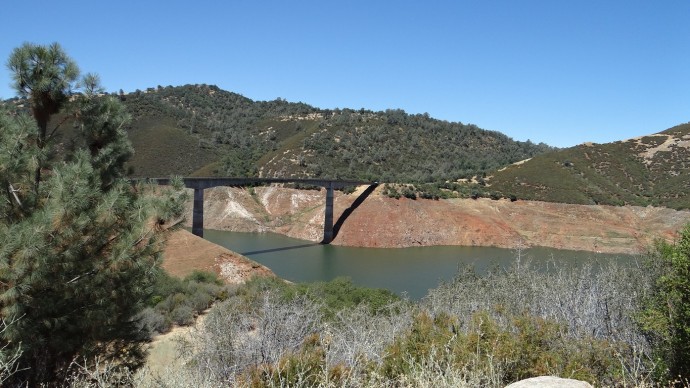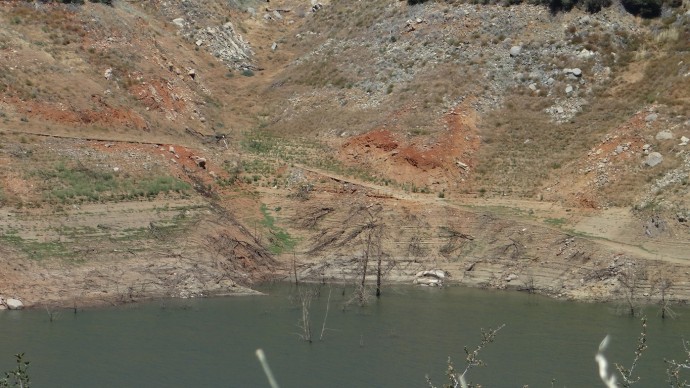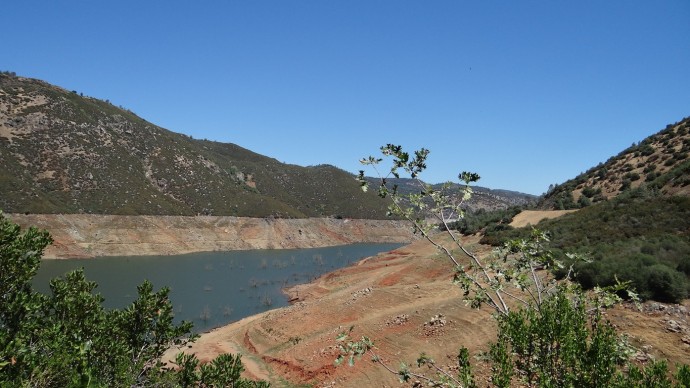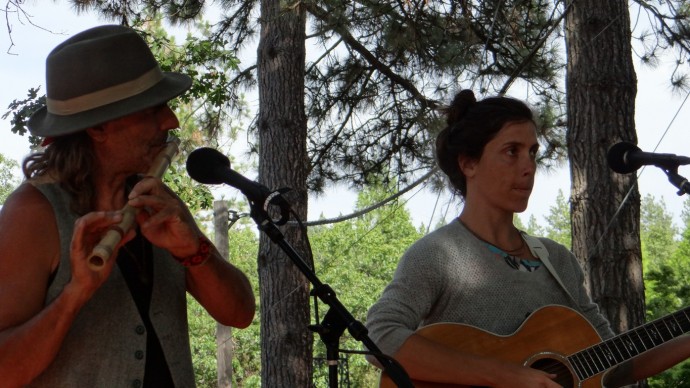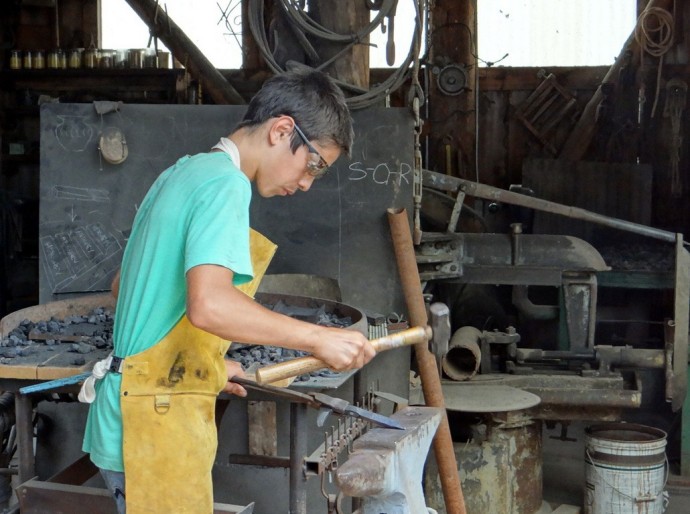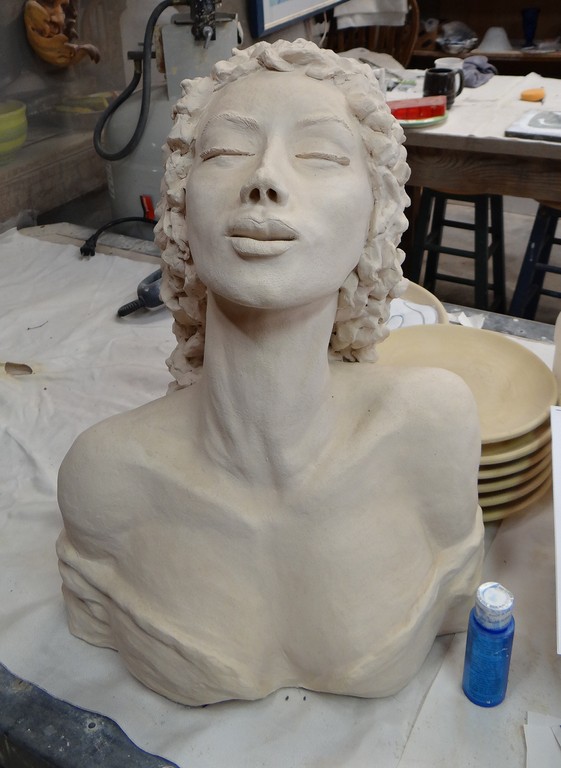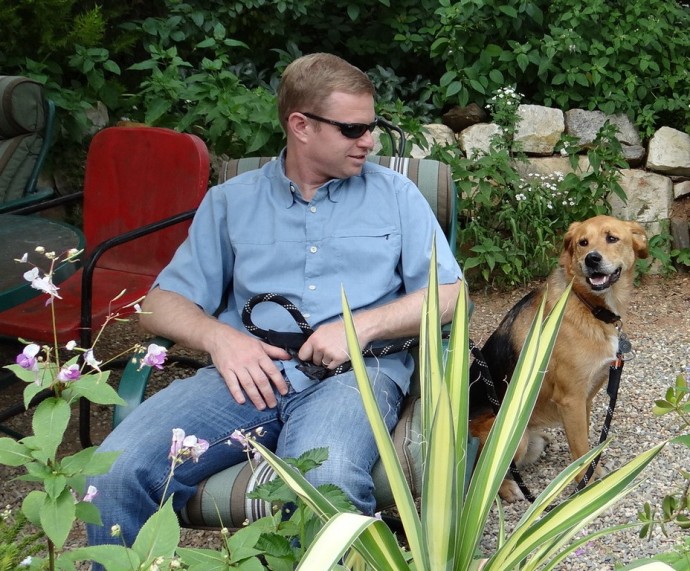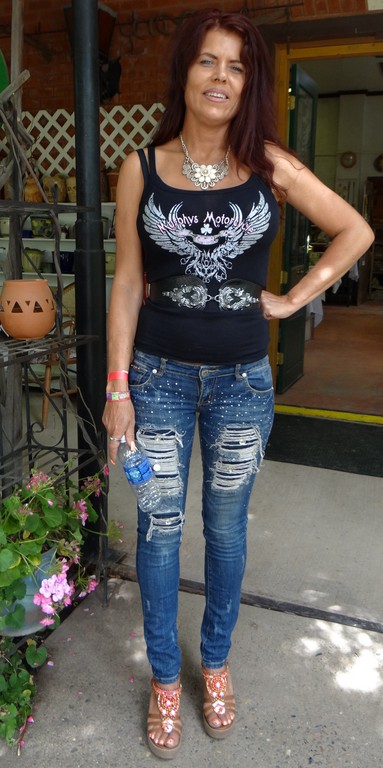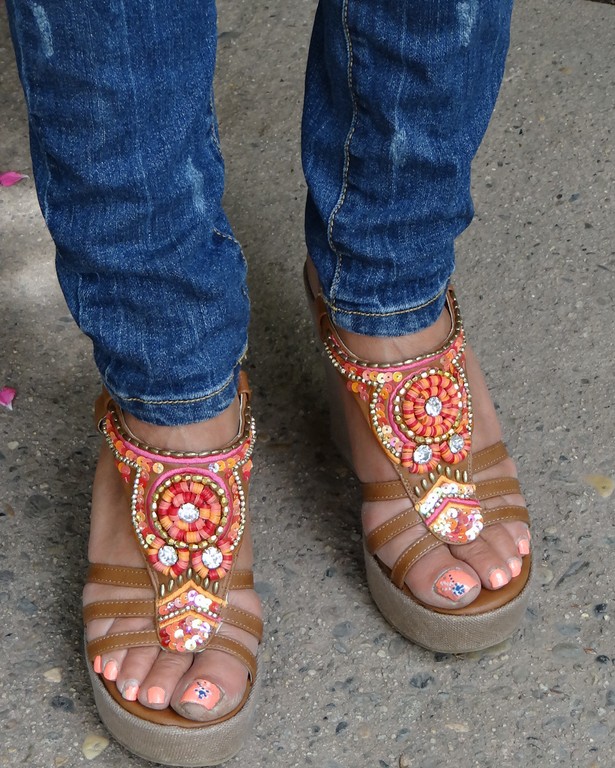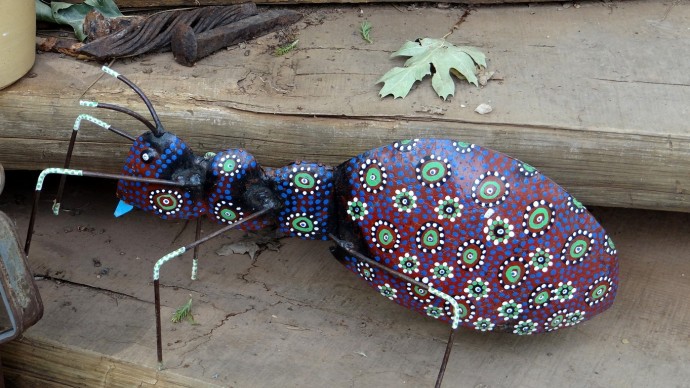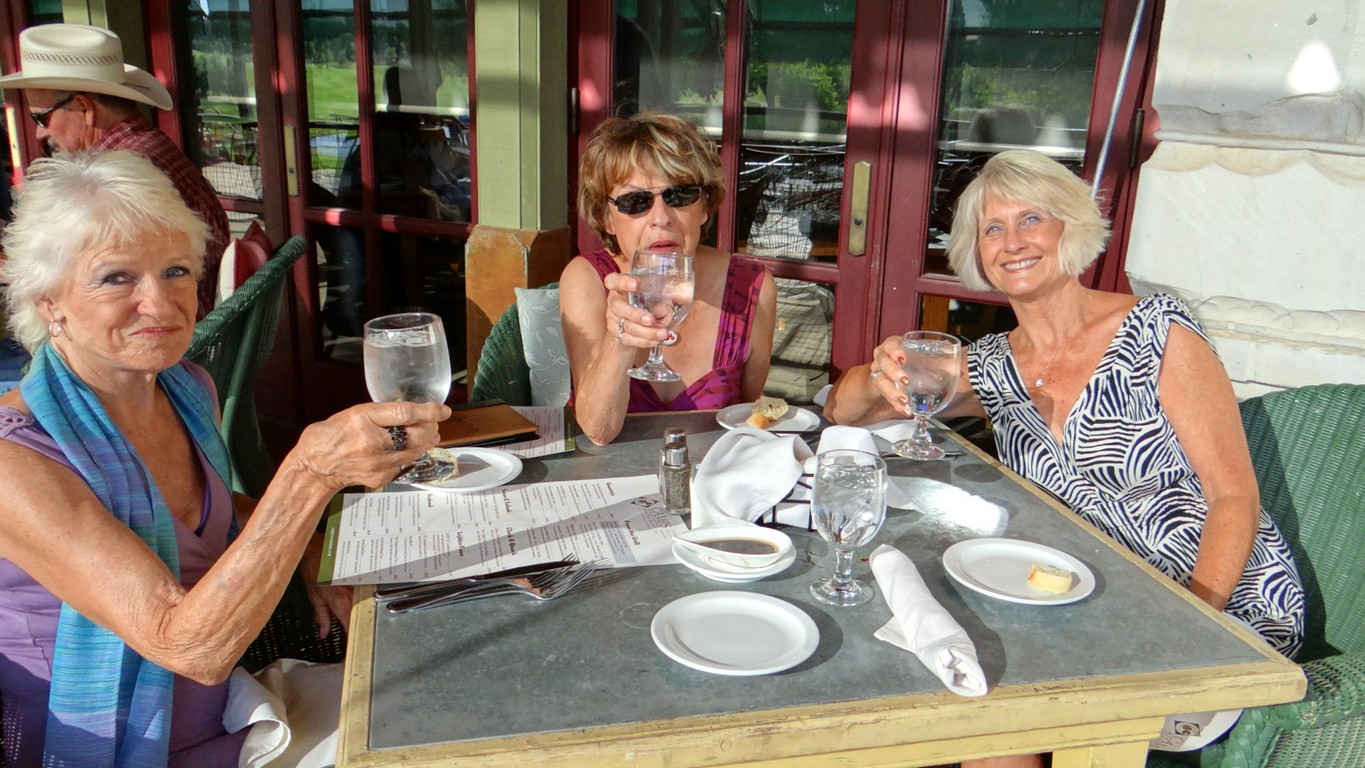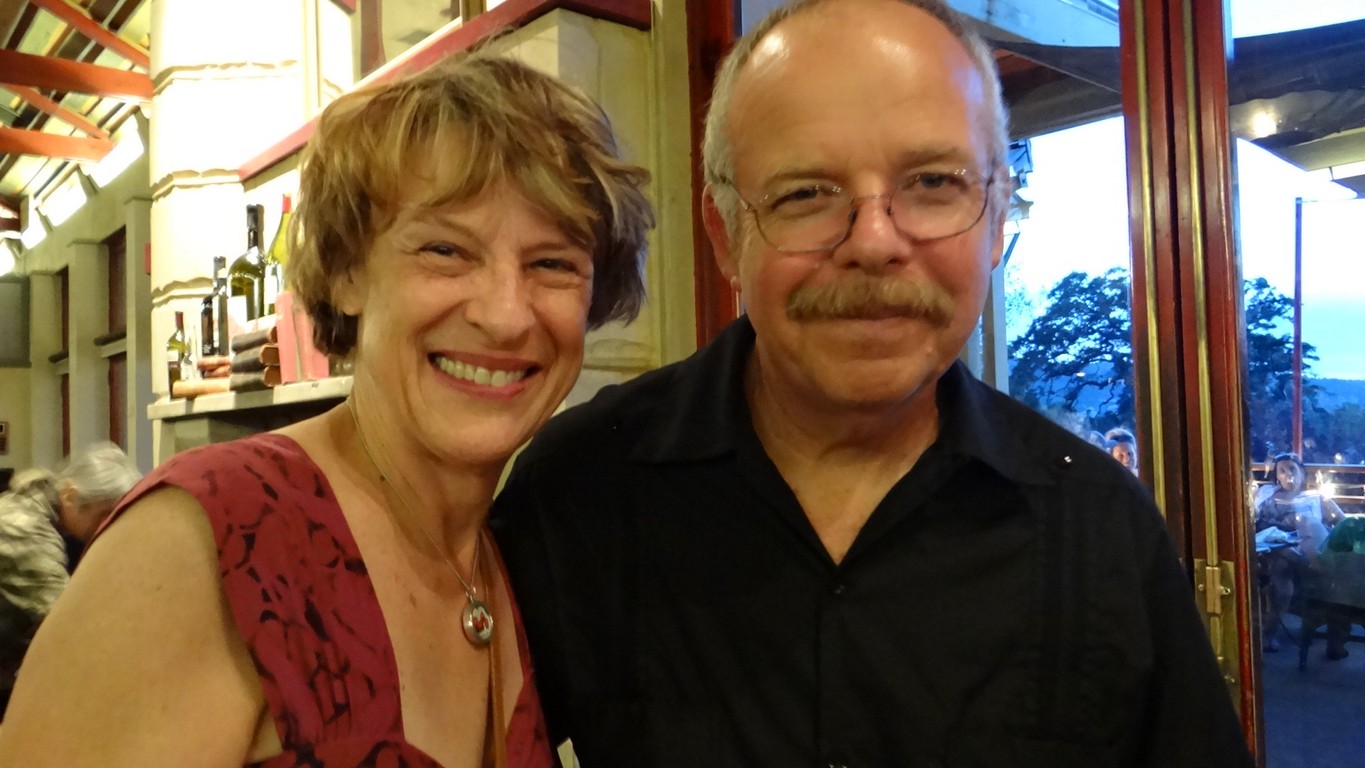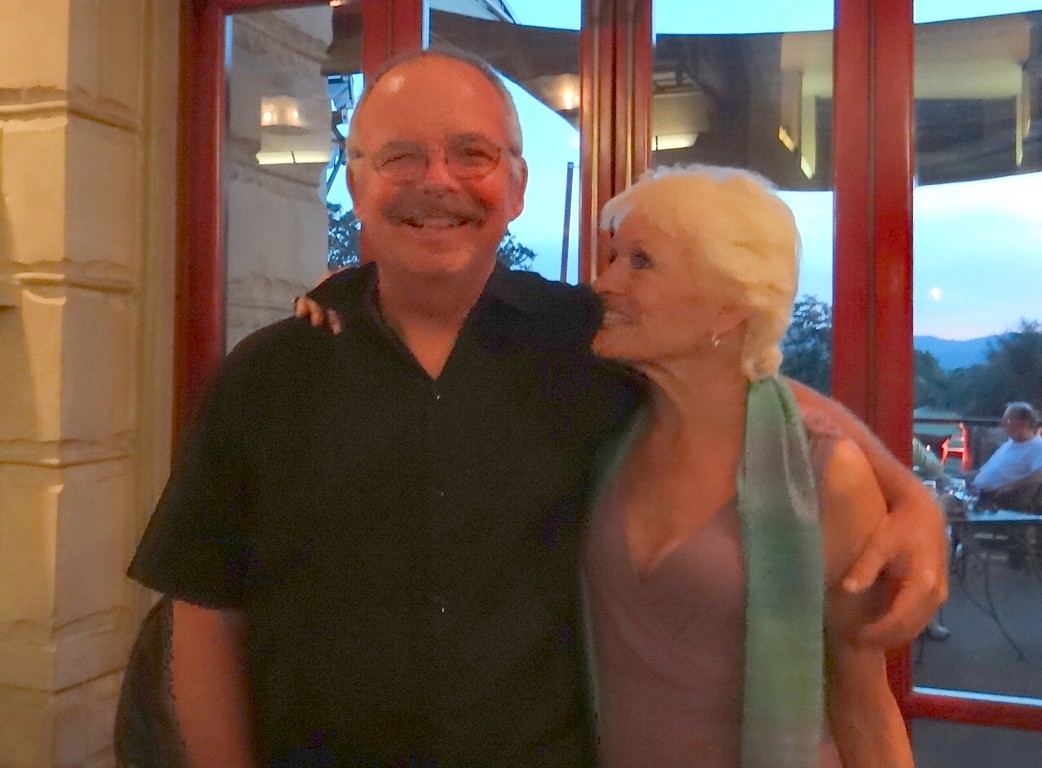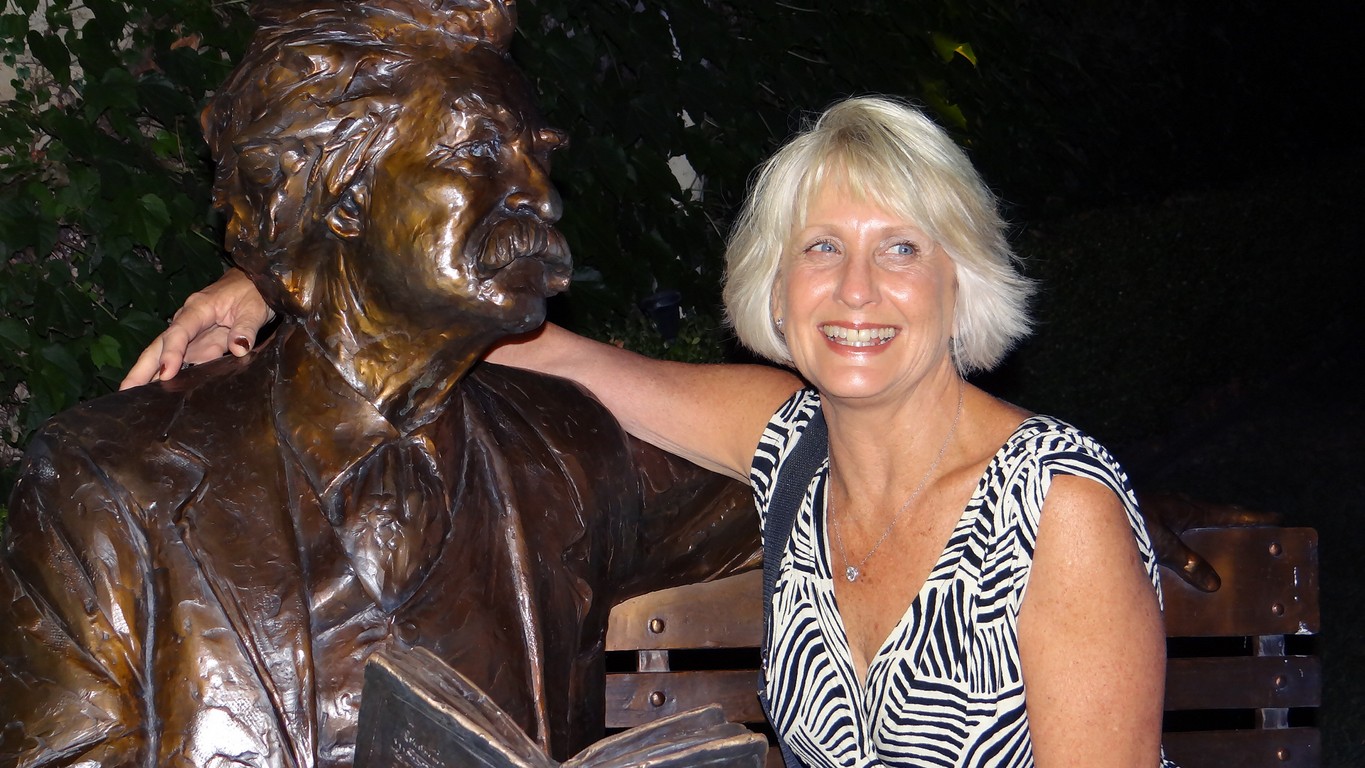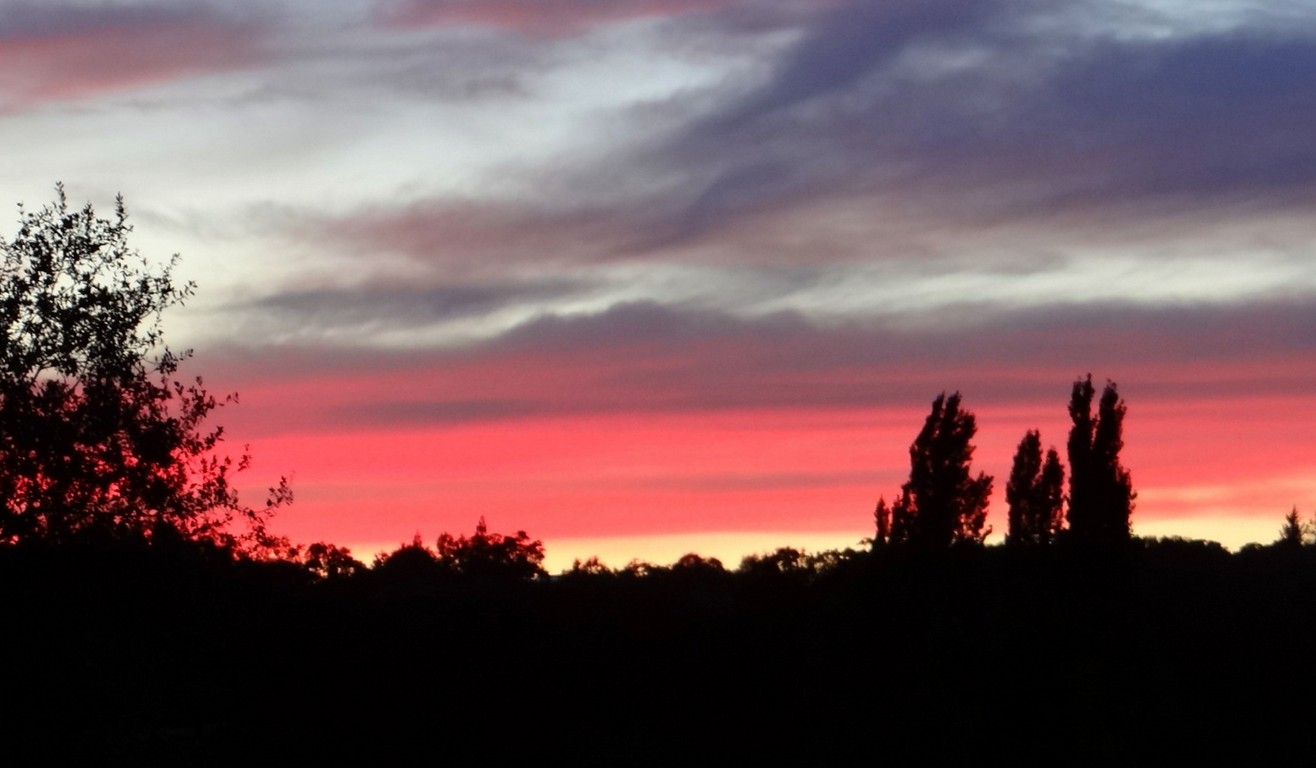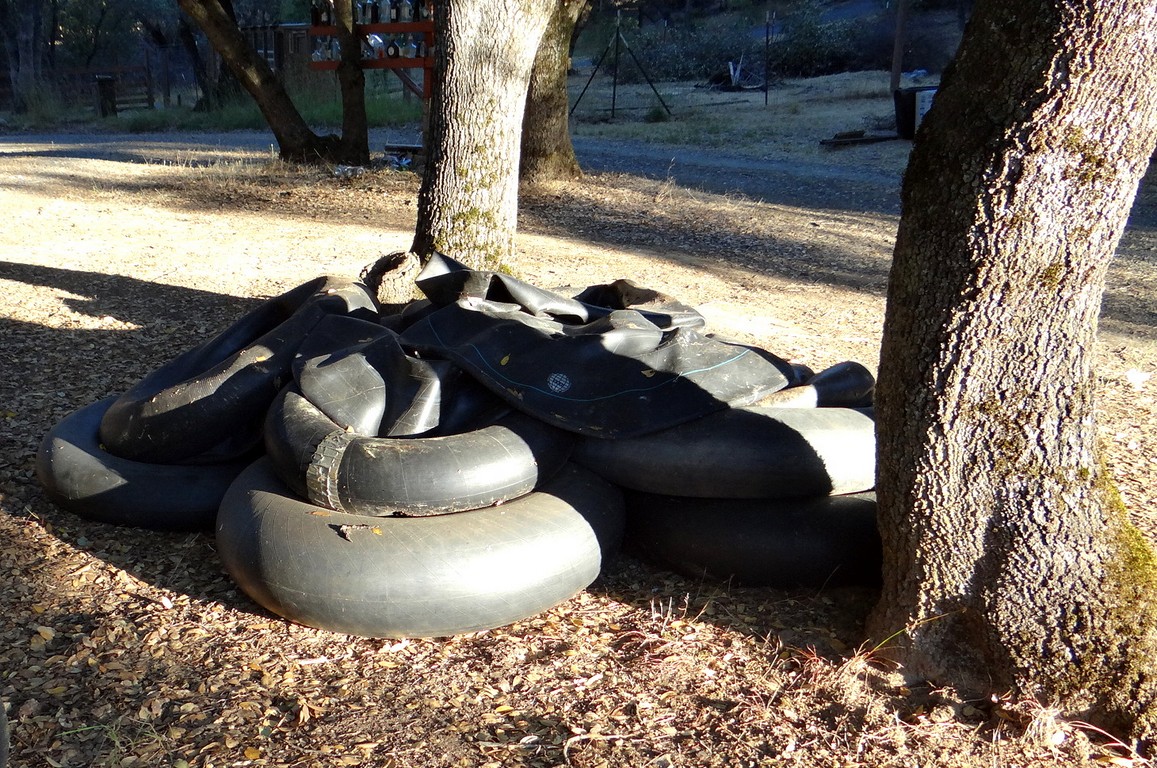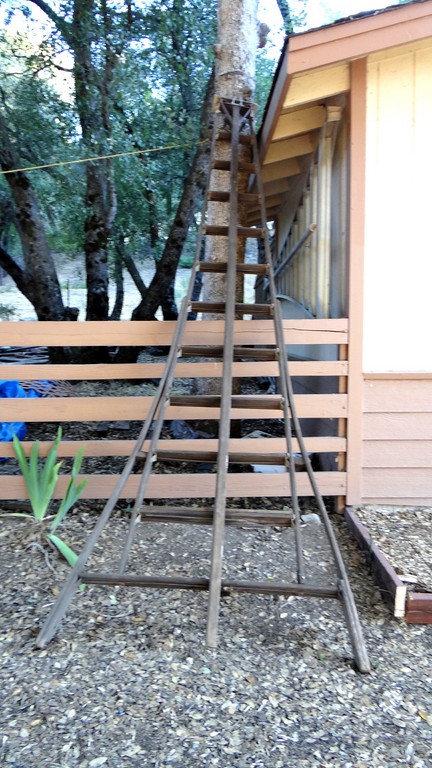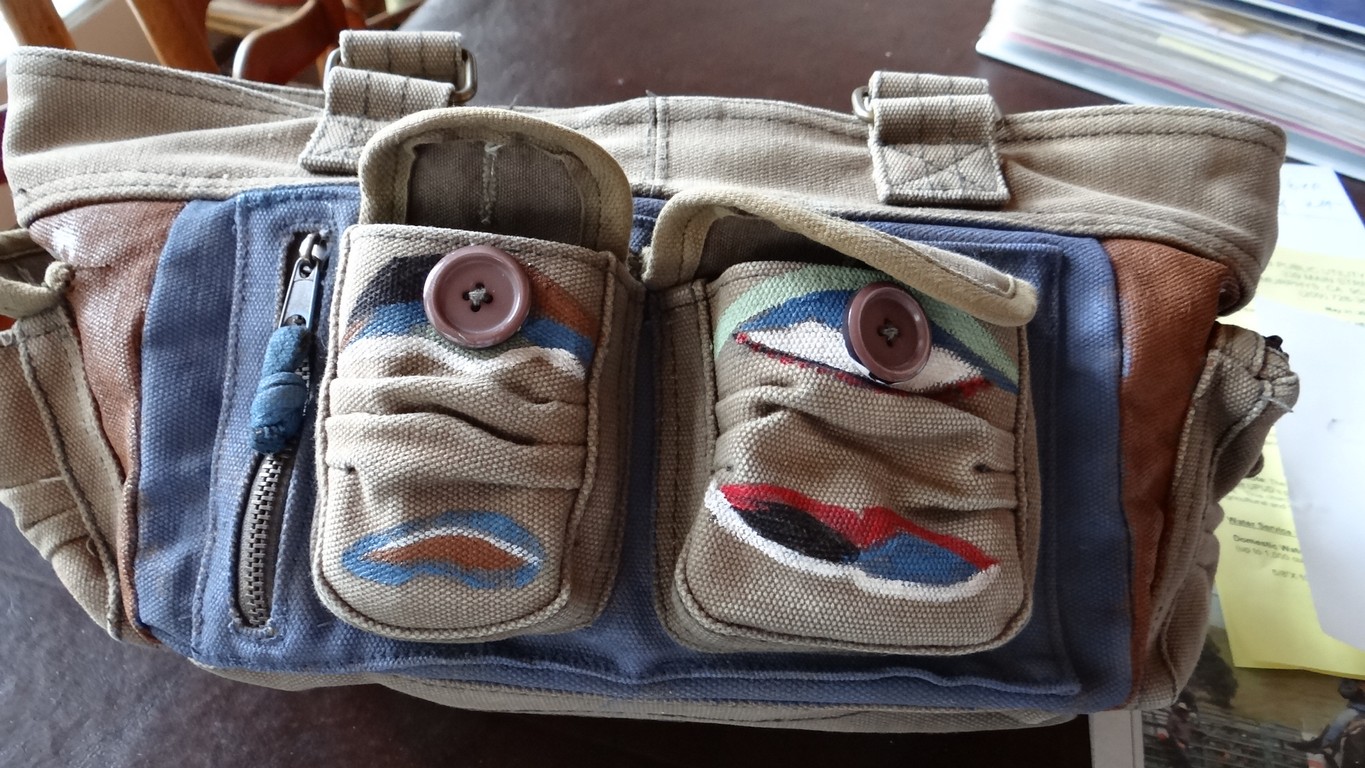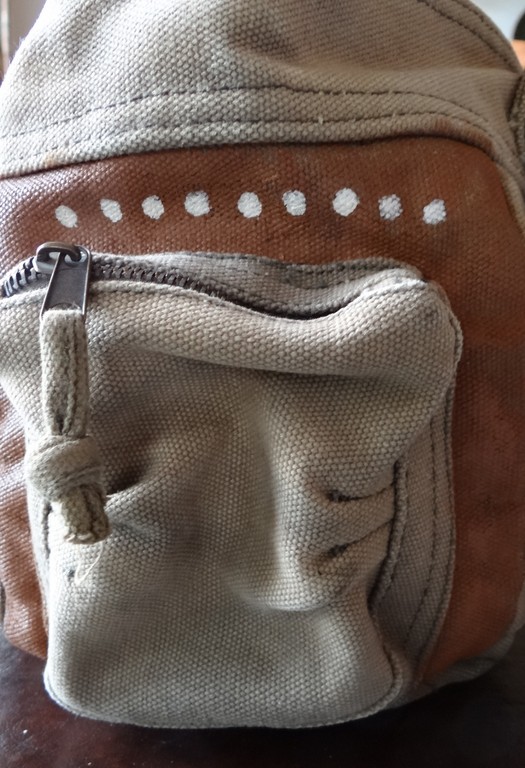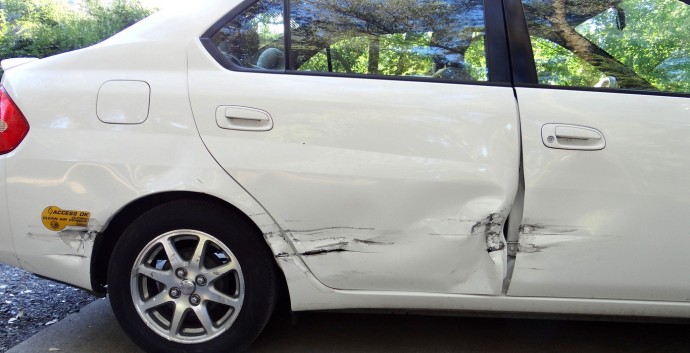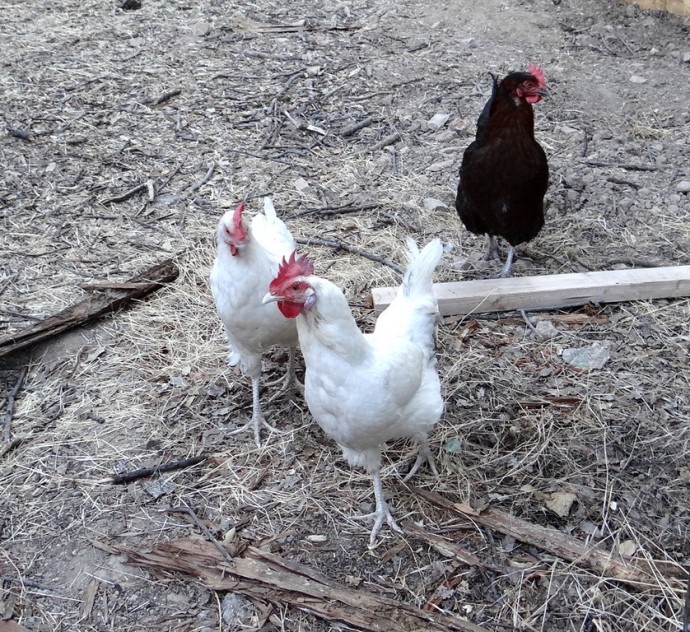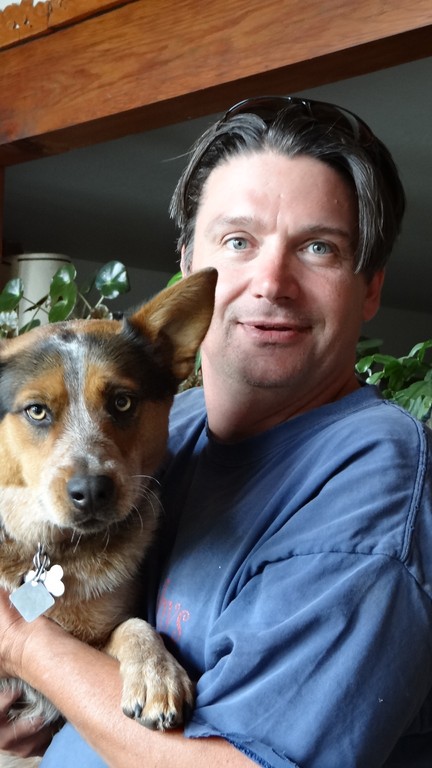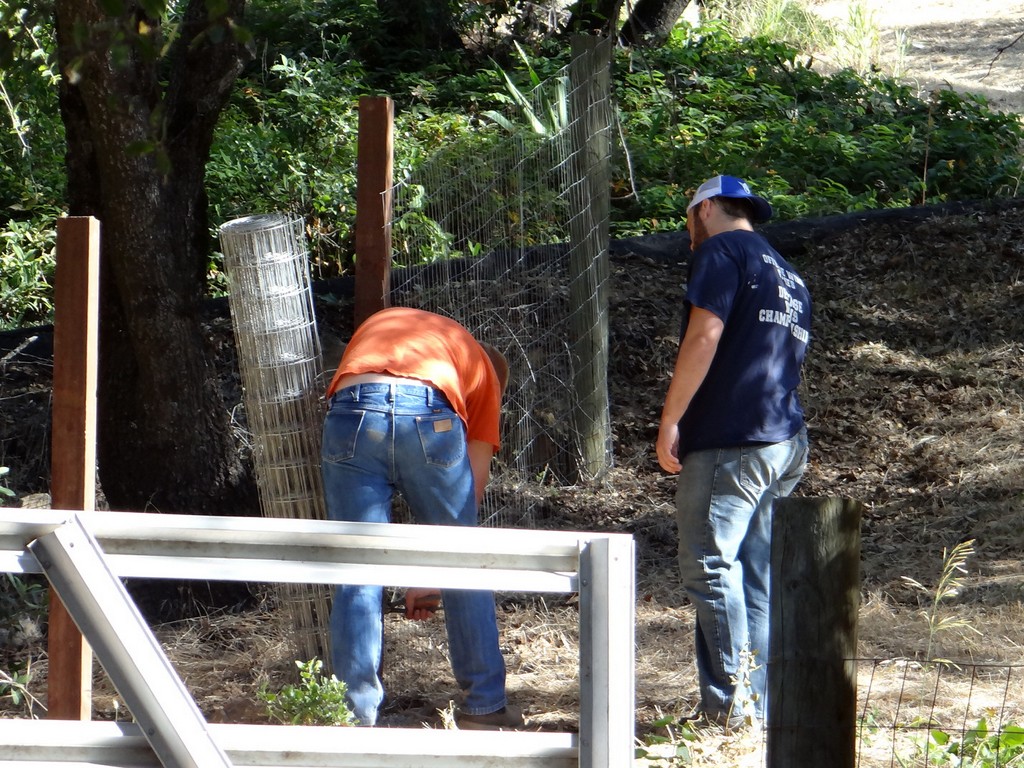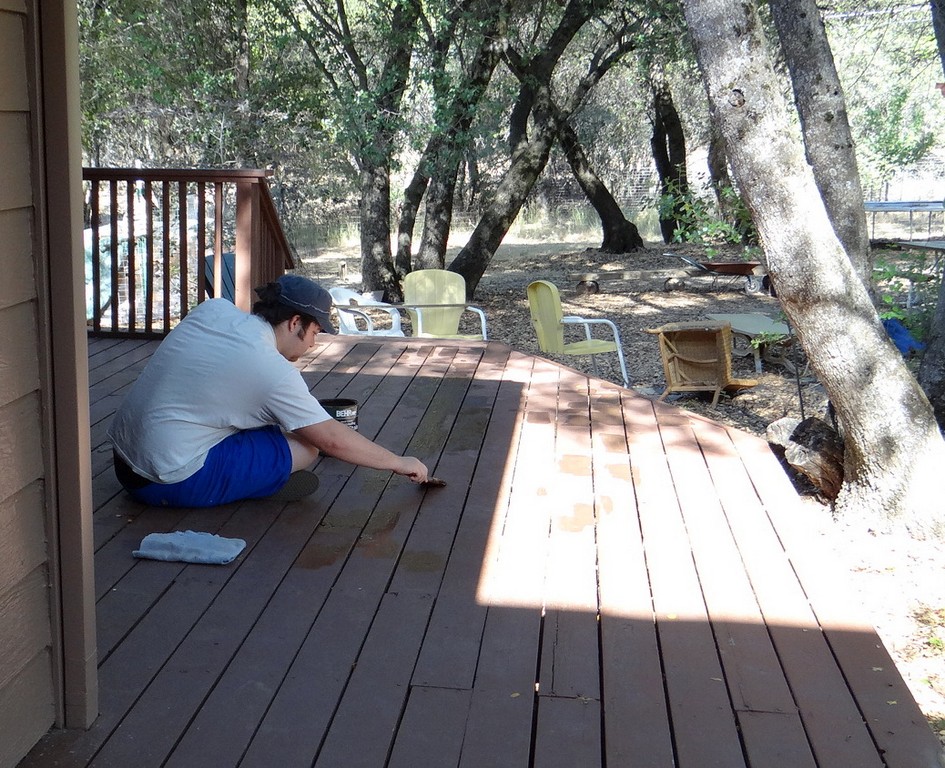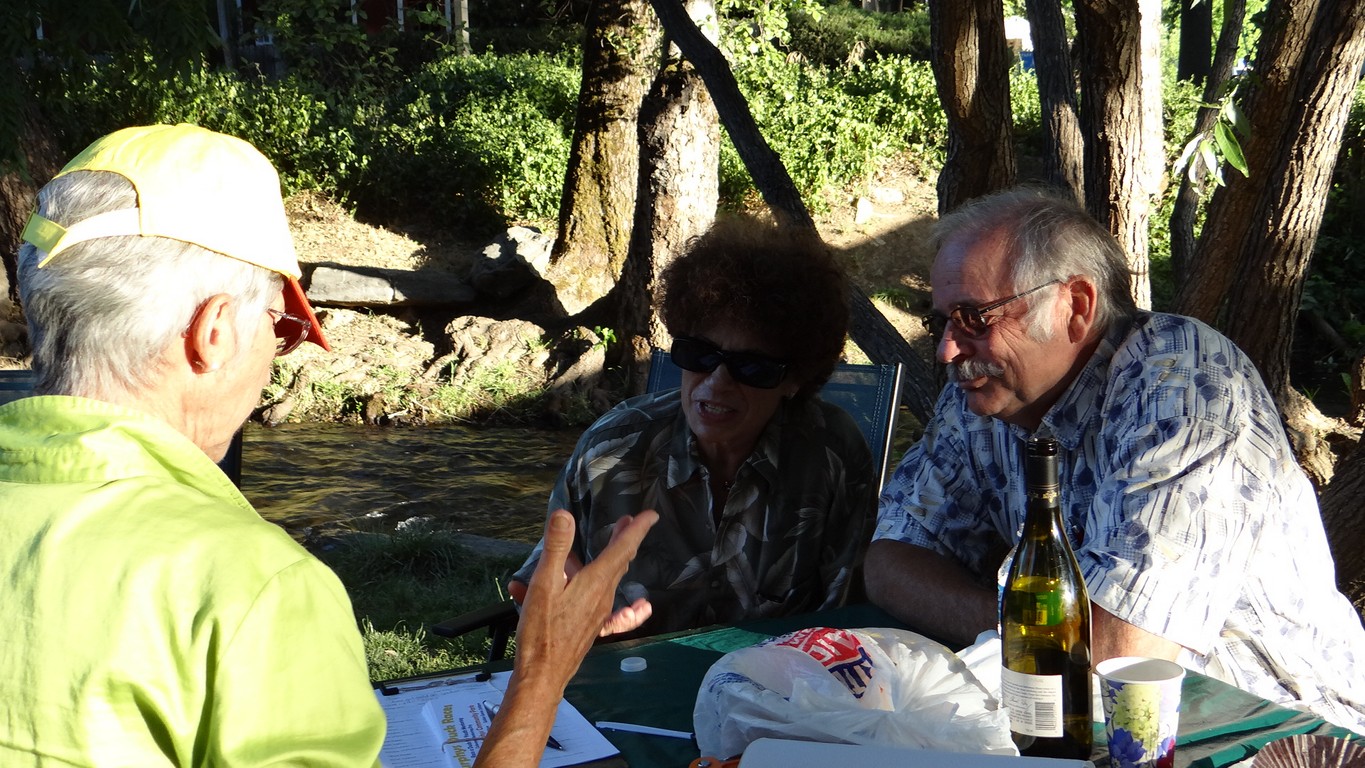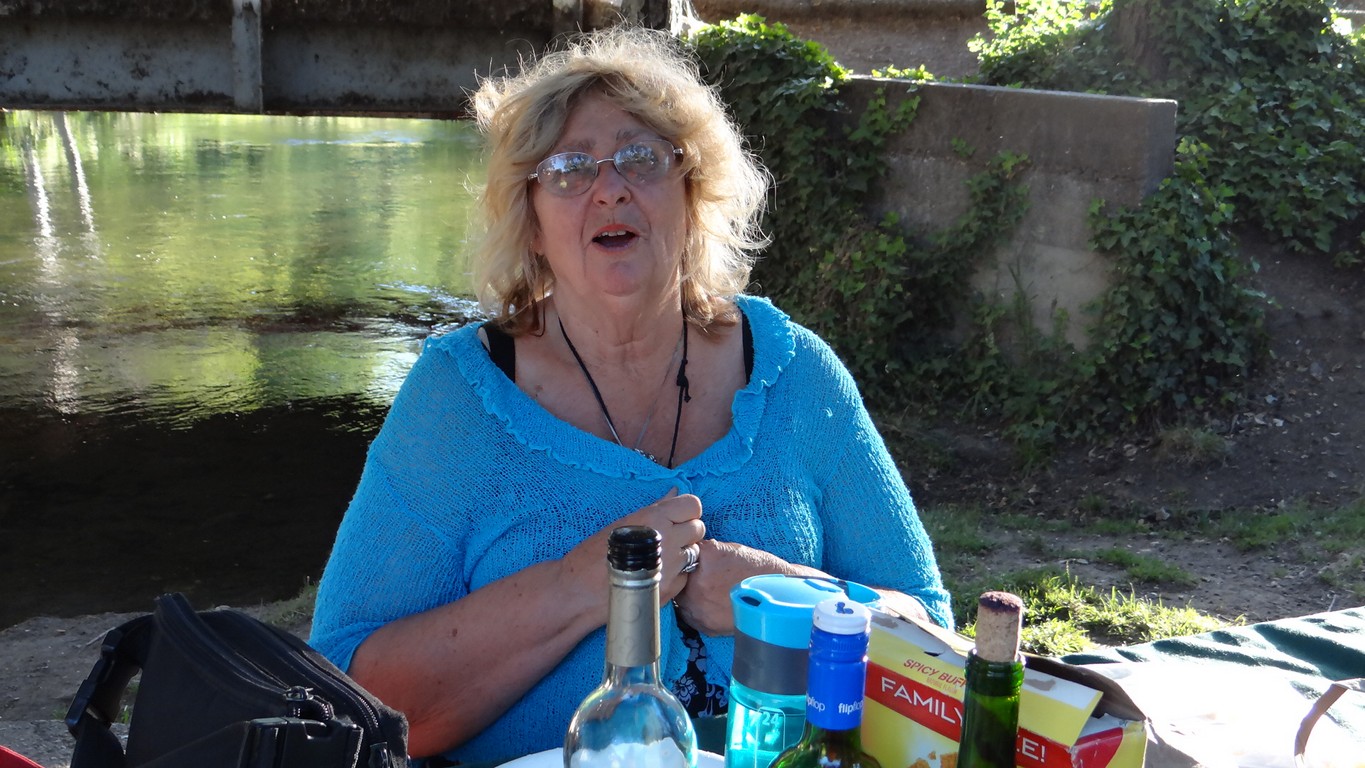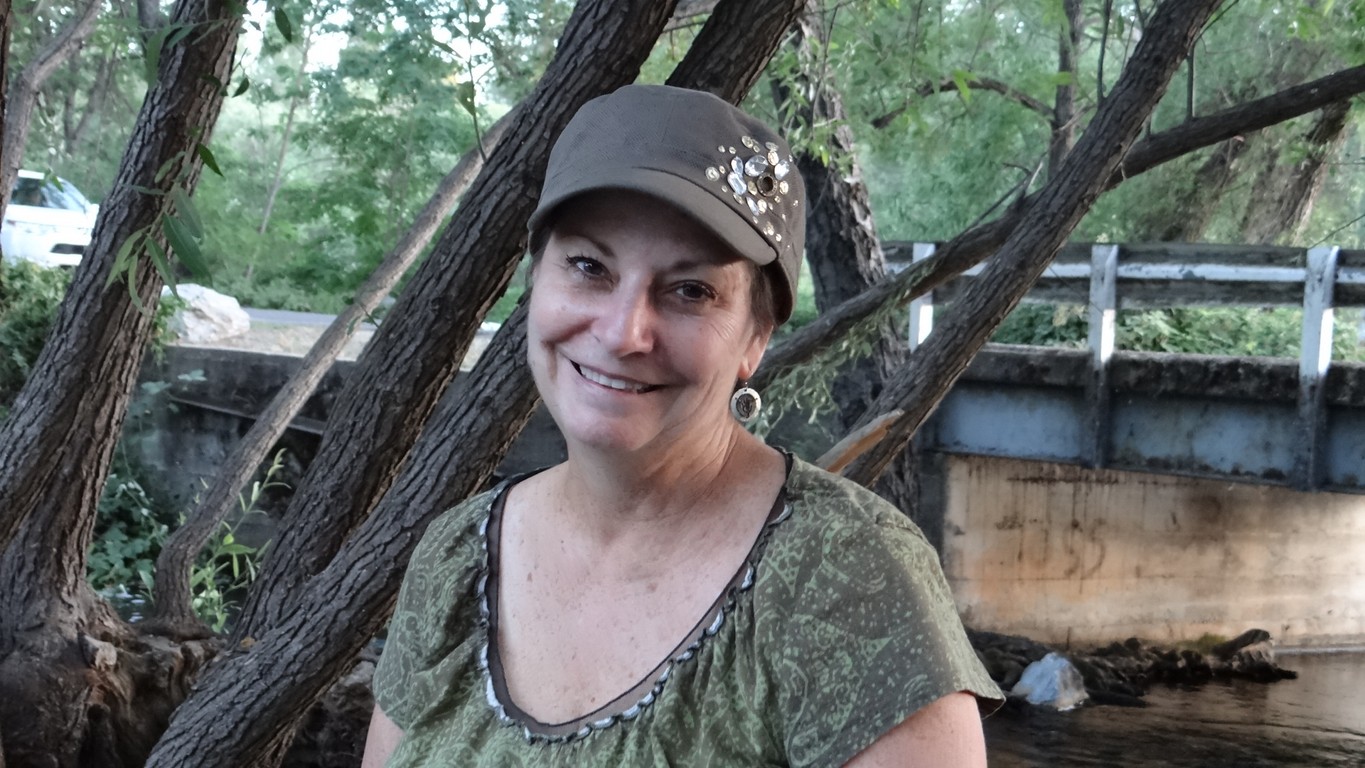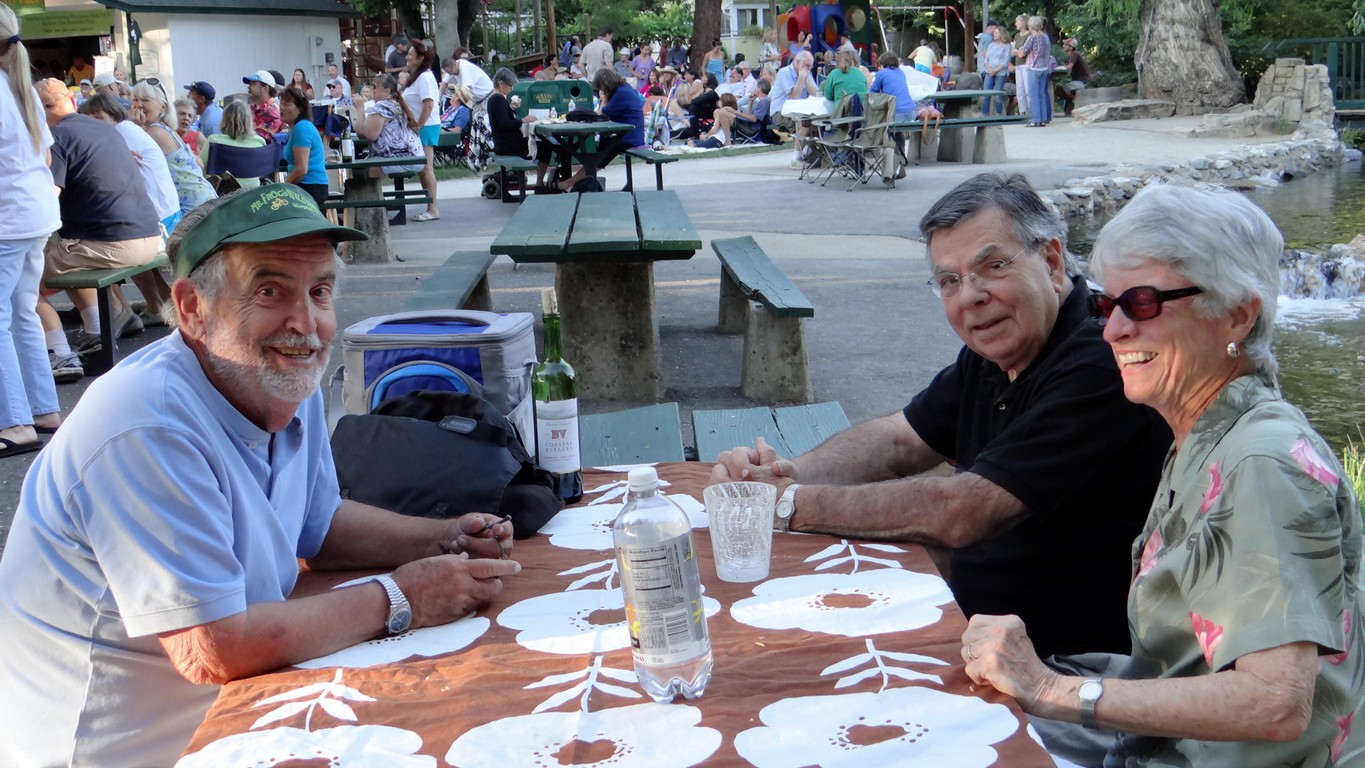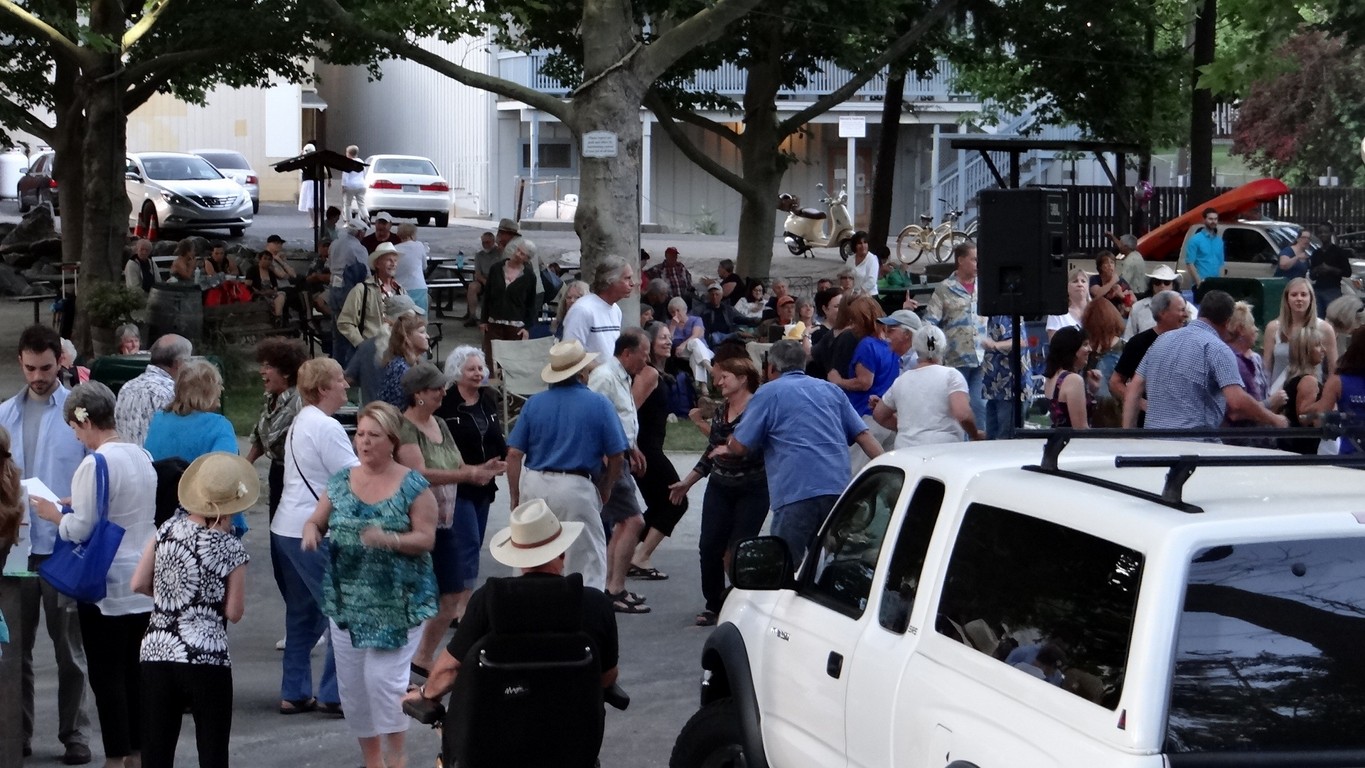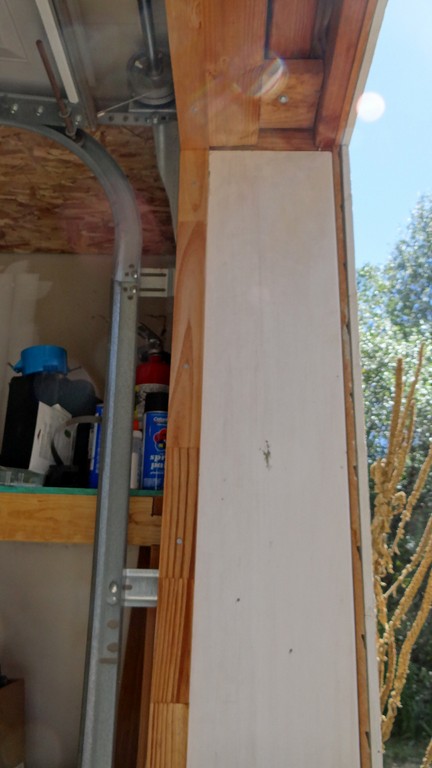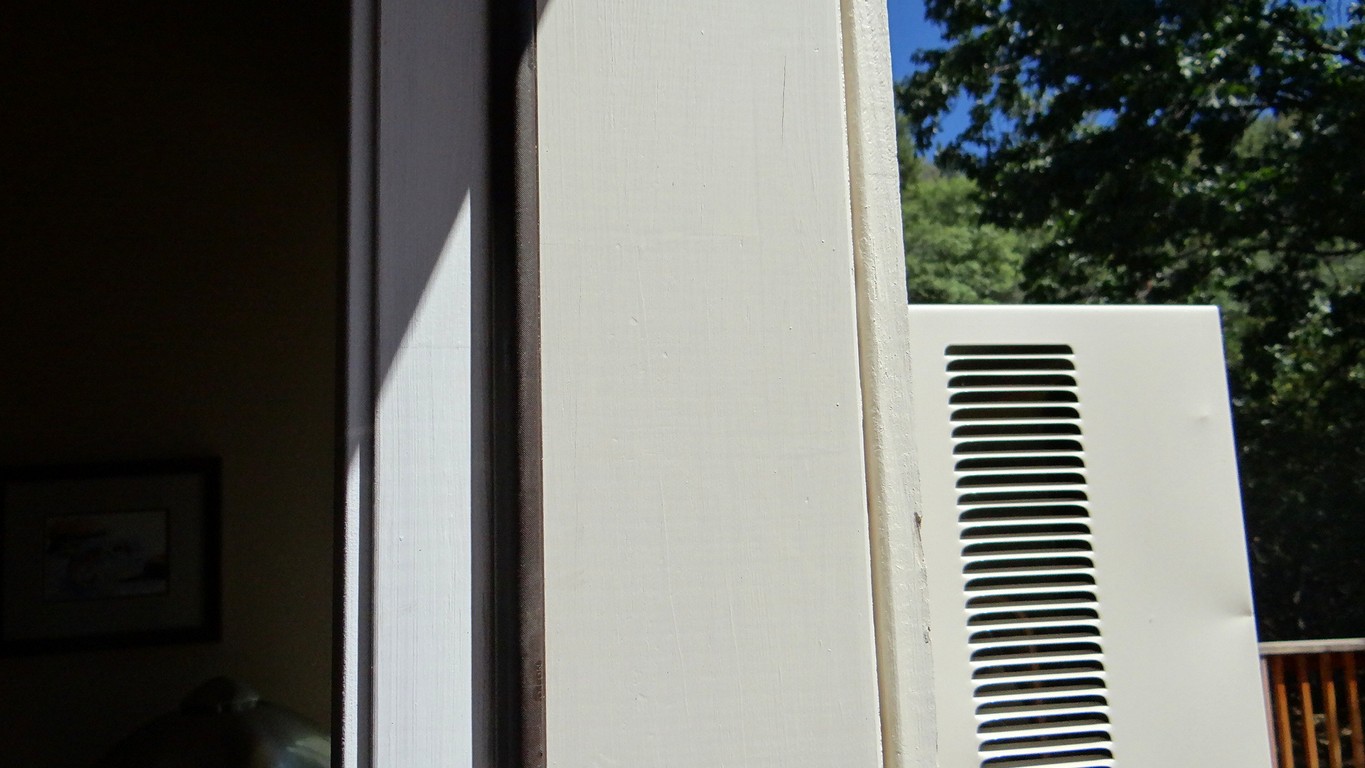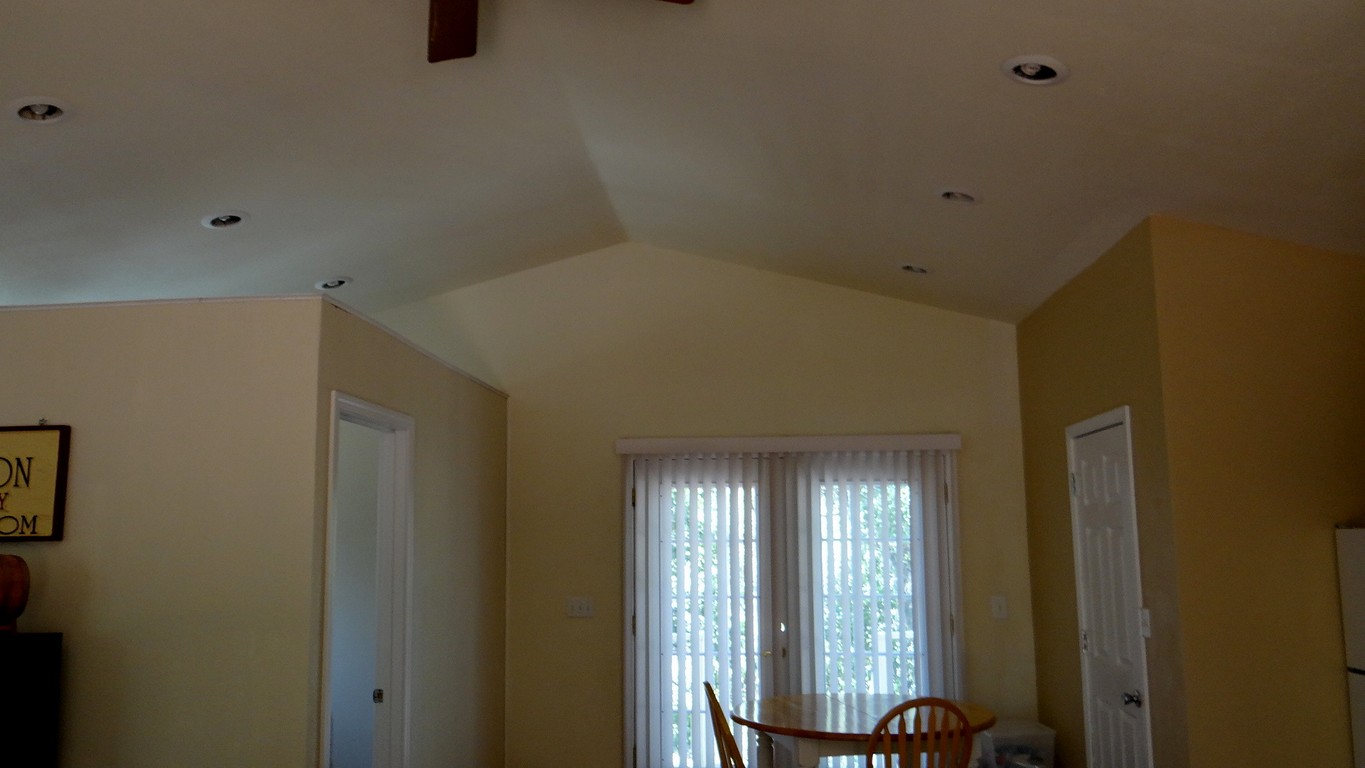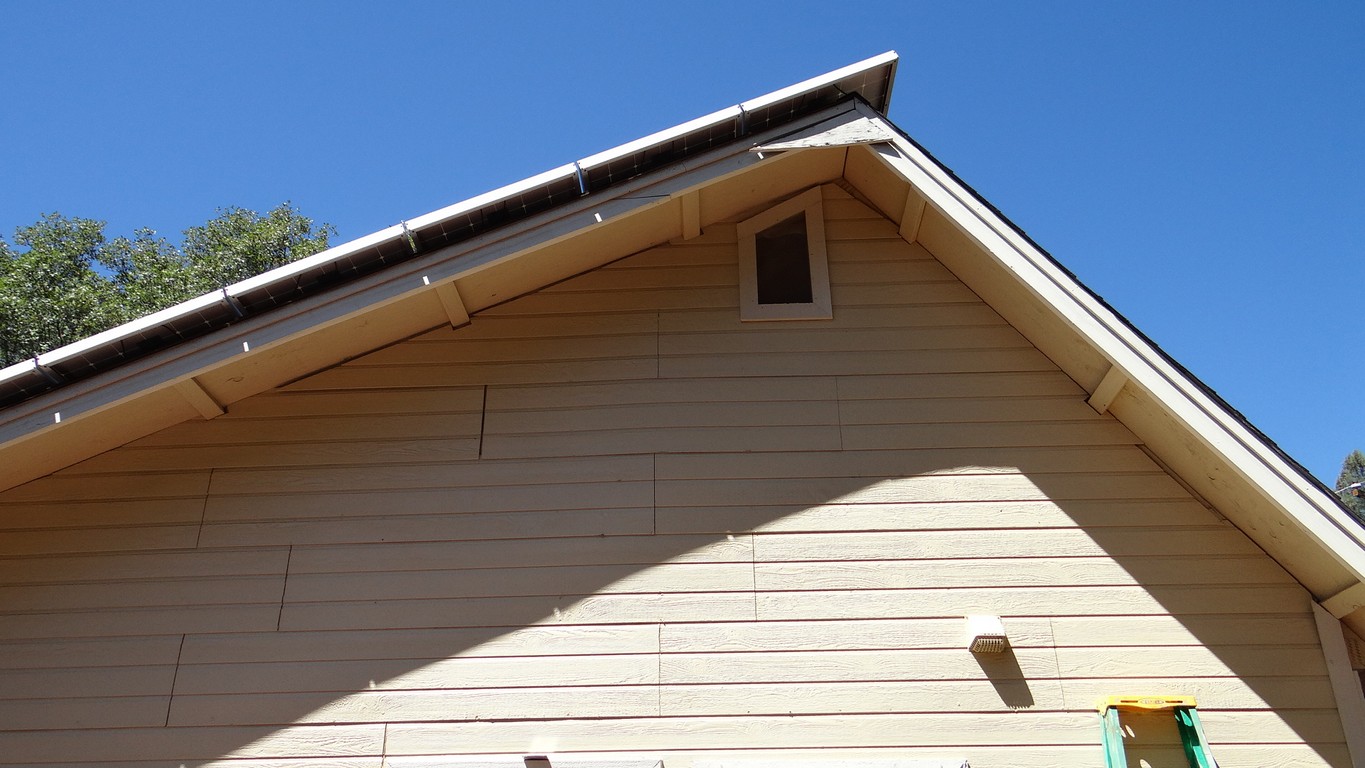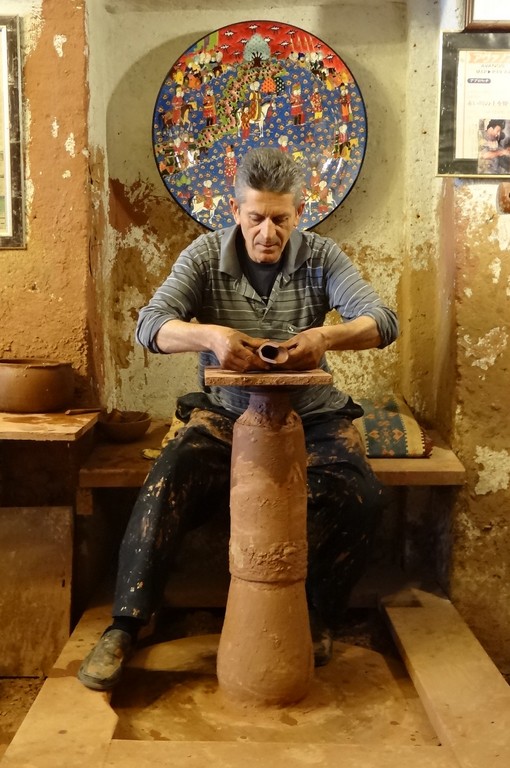
A master potter demonstrated his craft upon a no longer used ancient
kick wheel while we listened to music from an ancient instrument.
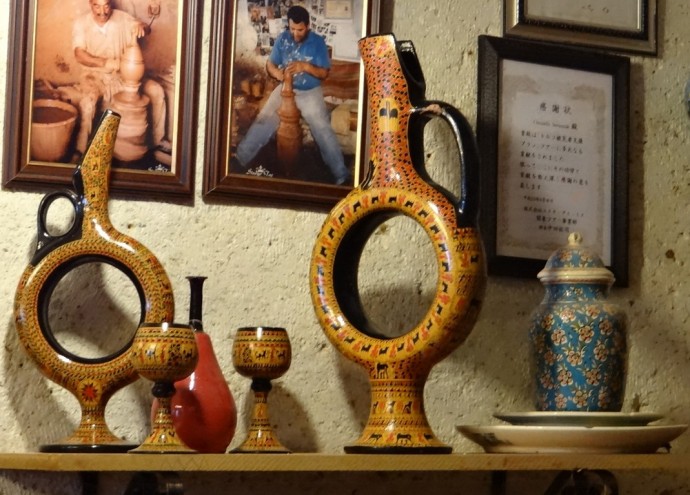
Even though we are in Cappadocia, the district is Antalya. A historic
vessel, hollow in the middle, holds wine or water. They are icons of
Turkish historical pottery and you find then everywhere for sale in
Turkey.
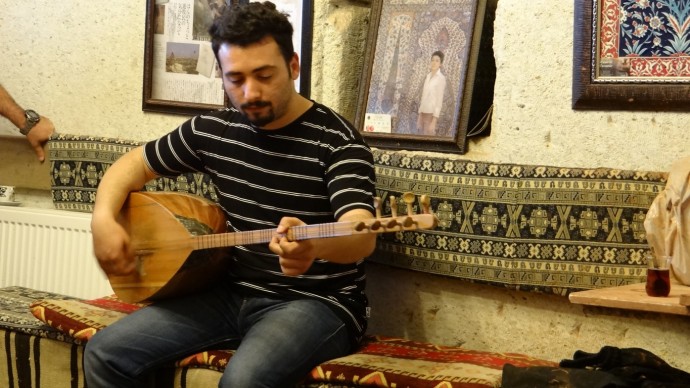
After our concert, we have volunteer try her hand at the potting wheel.
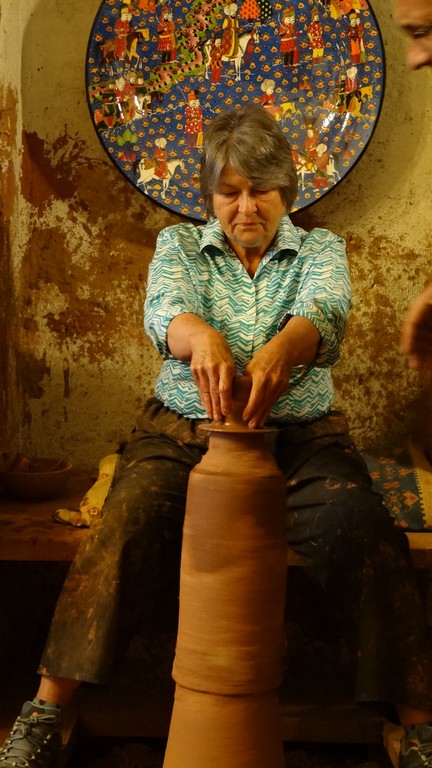
Joyce B. tried her hand at crafting a pot. She admitted using a
potting wheel before. We like it hen people try their hand at crafts
like potting.
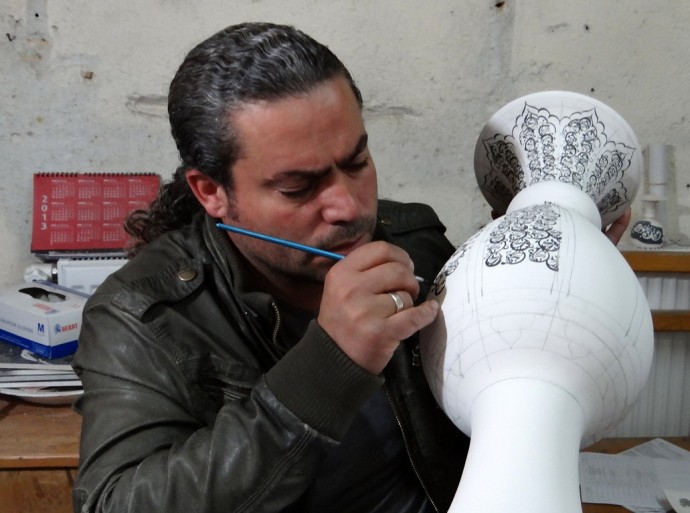
Pots here are all hand made and hand decorated.
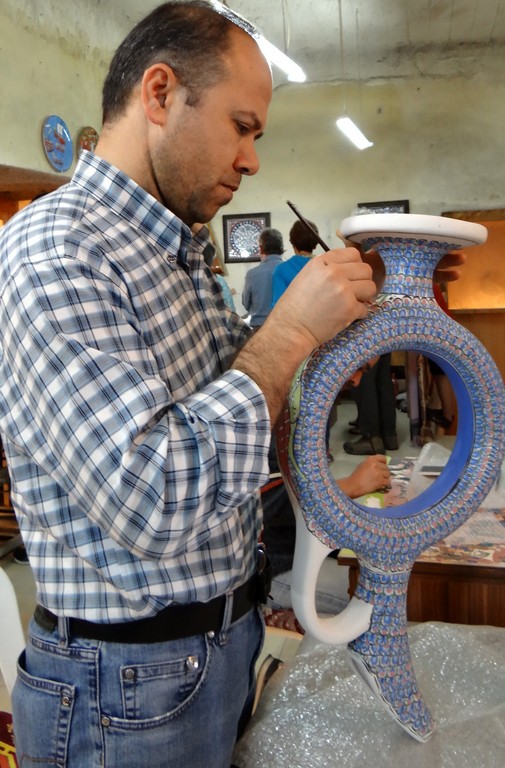
I found the designs more intricate than anything done in a United States pottery.
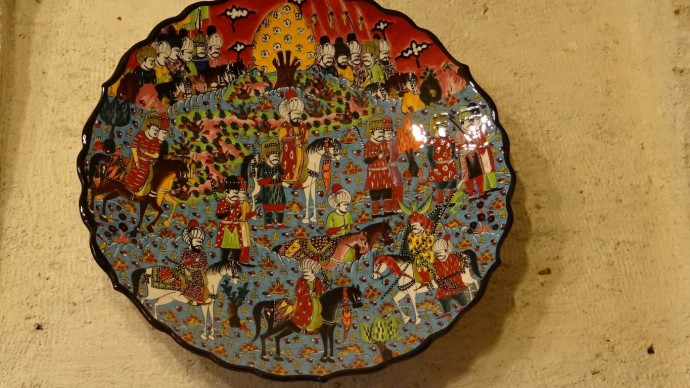
For sure you won’t see turban wearing sultans on horseback with spears from a U.S. Pottery.
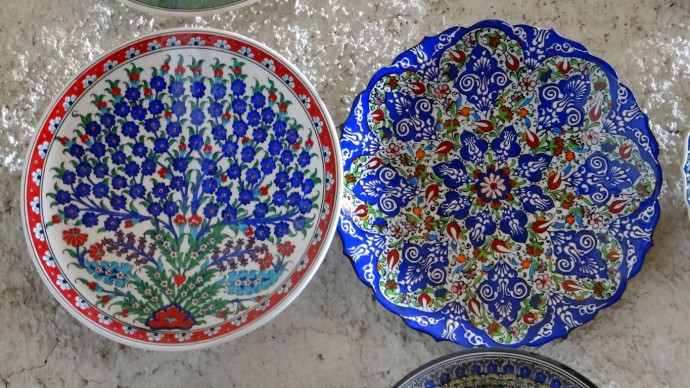
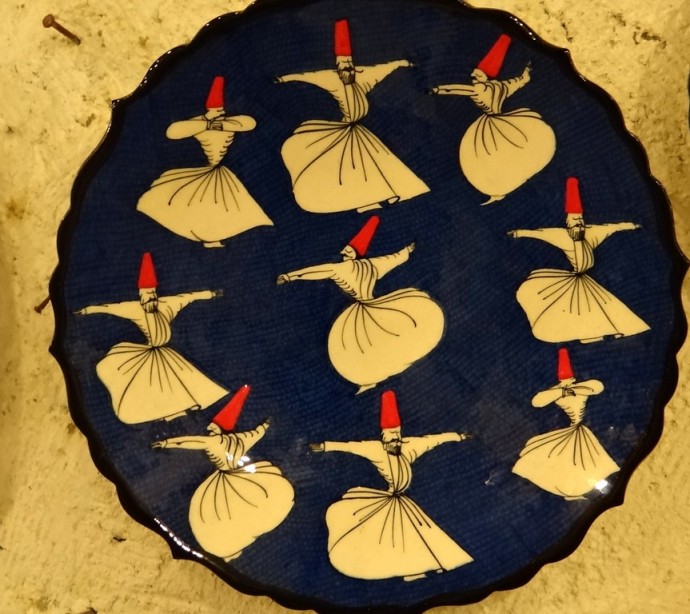
Nor a plate with Whirling Dervishes. Another Turkish icon at the pottery.
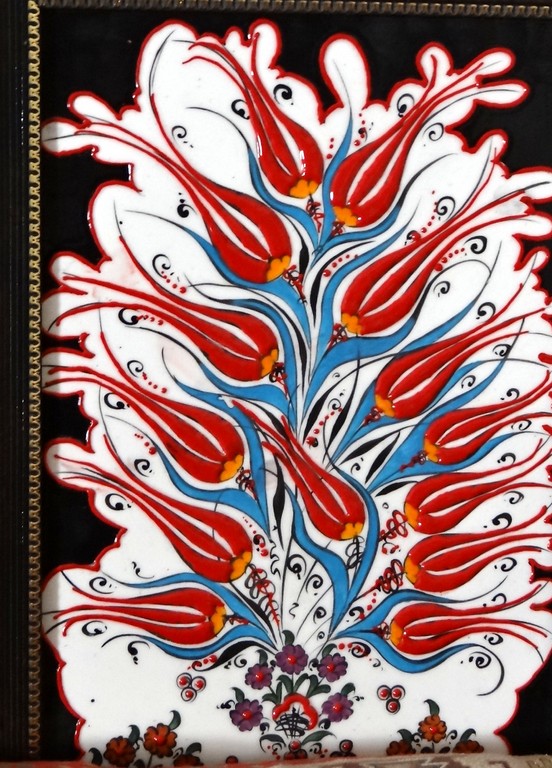
I wanted something with the beautiful Turkish tulips on it. This tile
was over two-hundred dollars and I decided I’d better keep looking. It
is only about nine inches high and seven inches wide.
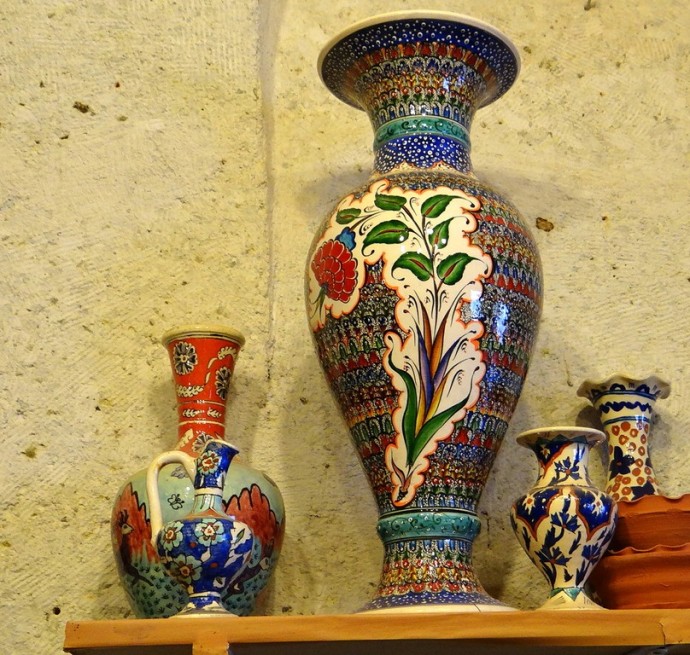
Everything in the shop was extraordinary.
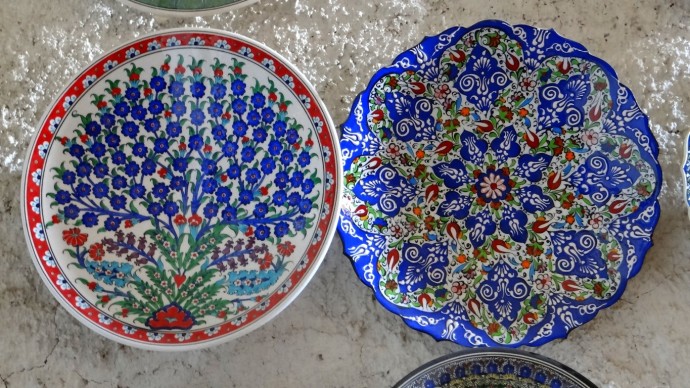
Once you ask for a price, they see you as a potential buyer and continually make you offers on things you see.
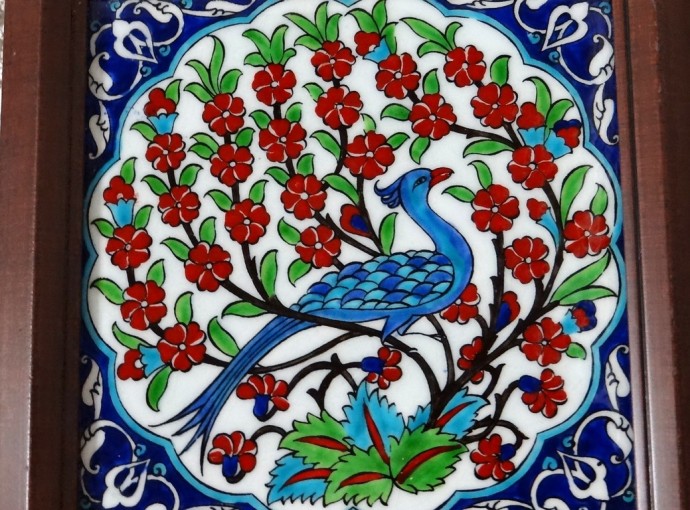
I told the sales person I was only planning to photograph their
beautiful wares and would tell other people how beautiful their work is.
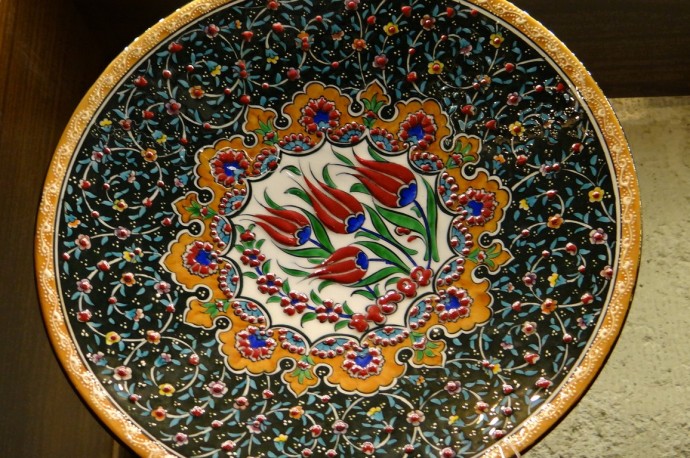
I continued to spot things with tulips.
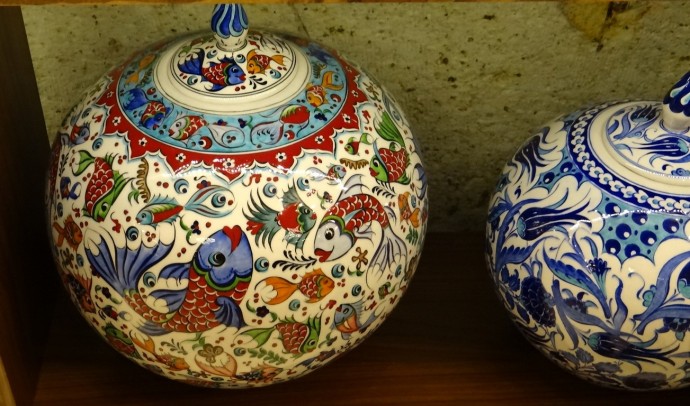
I liked other pieces as well.

He asked me, if you could choose any piece in this room (a room with
more economical pieces,) and price was no object, what would you choose?
I chose the turbaned gentleman with a flute. He said, that is too big
for you I have another, smaller with more detail. You have very good
taste. That is made after a famous $1,500,000 painting in the National
Gallery entitled “The Turtle Trainer.” He gave me an affordable, but
still high quote. So, he offered me a second plate, with tulips on it,
both for that quoted price and I accepted. So, now I have to look up the
Turtle Trainer and read about the painting. And, I’m already enjoying
him hanging on my dining room wall along with a lovely saucer of
tulips.
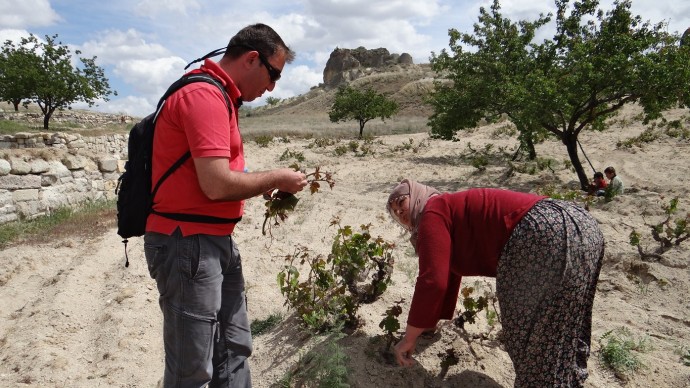
It is our last day before flying from Cappadocia to Istanbul, to U.S.
After a break for lunch, Usla has the bus drop us off near a field from
which we hike to the village of Usichar. On the way, he sees a “momma”
weeding grapes with her two children. He stops to talk and he picks
vines new and green. He shows us that you can strip the peeling and eat
the center stalk. The stalk is moist and tastes much like lemon-grass.
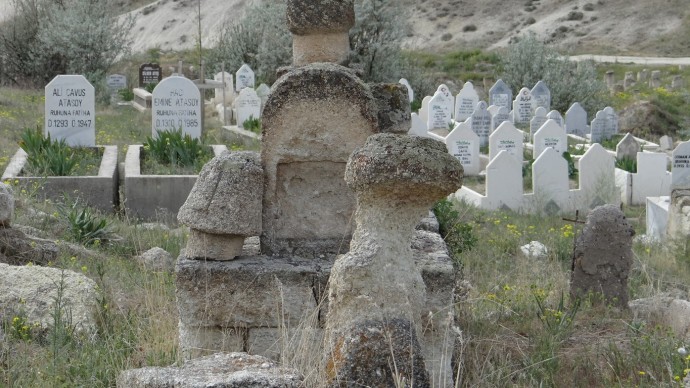
We hike up-hill and stop at a cemetery before entering the village.
Some of the graves are unmarked stones. Because they are ancient, some
BC, the wind and rain have eroded any inscriptions away. Contrasting is a
part of the cemetery where recent deaths can be easily read. In highly
populated areas, Moslems are now cremated and their ashes buried. But,
in the countryside, people are buried the old way. The body is brought
to the Mosque and faces East. The Imam chants and prays. At the end of
the prayer, he says: “How do you know this man?” Answer: “He is a good
man.” (Or woman or child.) He repeats that question and receives the
answer three times. A second service is held at the graveyard, where
the body is removed from the shroud and he is buried “soil to soil.”
Then the mourners wail and cry and cry and pray. The coffin is recycled
for the next death.
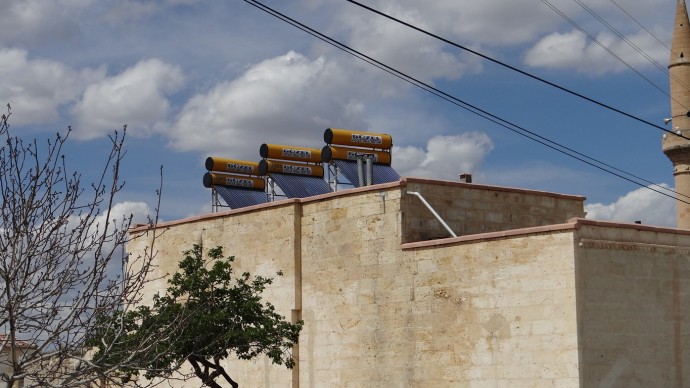
Surprisingly, small villages like Usichar have solar water heating on roof tops.
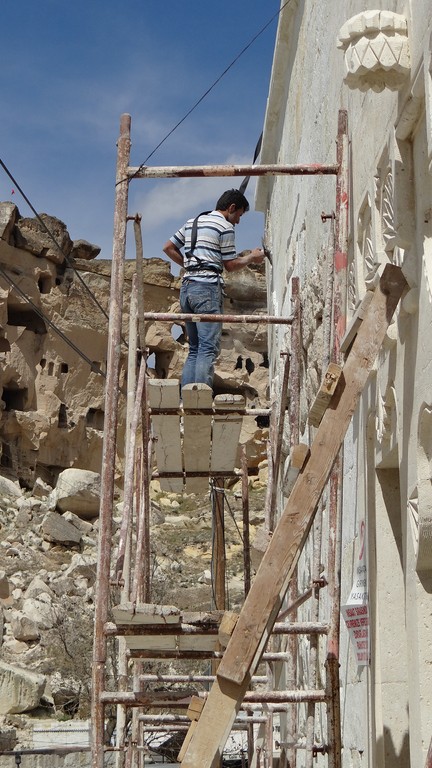
The village has narrow streets with little souvenir shops and spots
to eat or have tea. We strolled around a bit and then headed up hill, a
steep climb, we were warned, on uneven surfaces, unstable rock and
shale. I almost opted out but at the last minute followed everyone up
the hill.
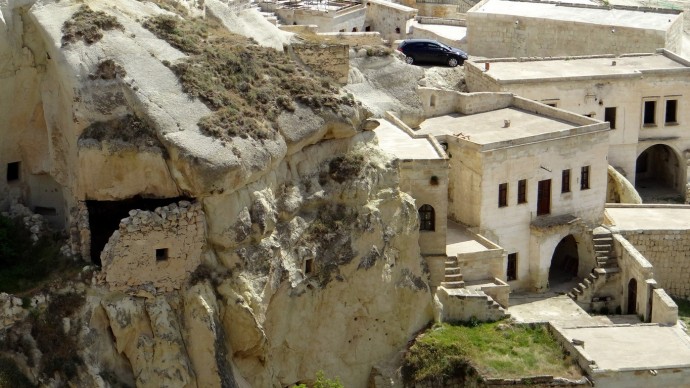
Up, up and up we wound around the narrow streets.
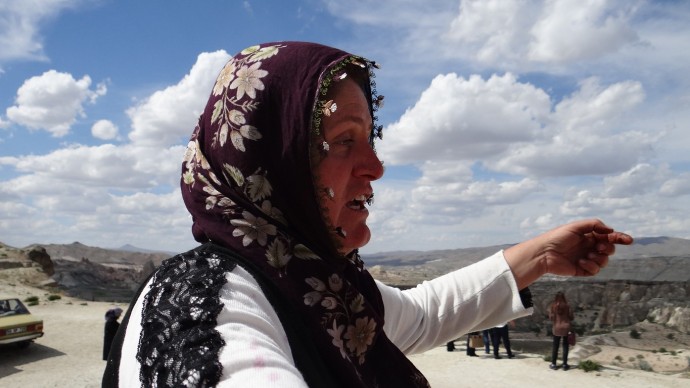
Near the top we meet a “momma”. Usla knows her.
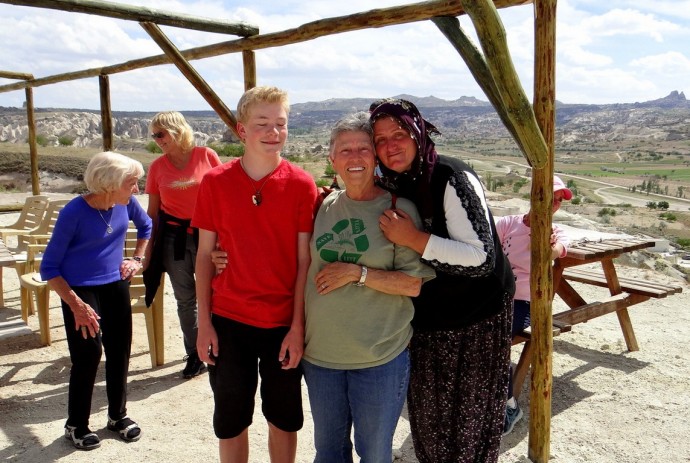
She chatters non-stop and hugs us and gives us air-kisses, both sides
of face. We have a picture taken and she continues her chatter to any
and everyone. A sweet soul who cherishes all.
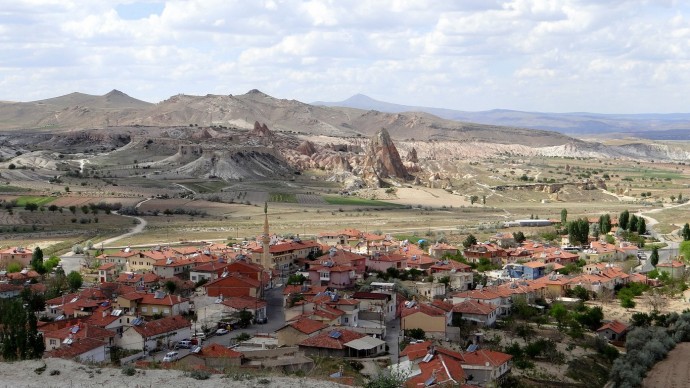
From this vantage point, we can see the village below, its main
street, the mosque, the houses and businesses, and the distance we
walked.

We finally reach the top and Usla decides we should head down the back way. I took a panorama from the top.
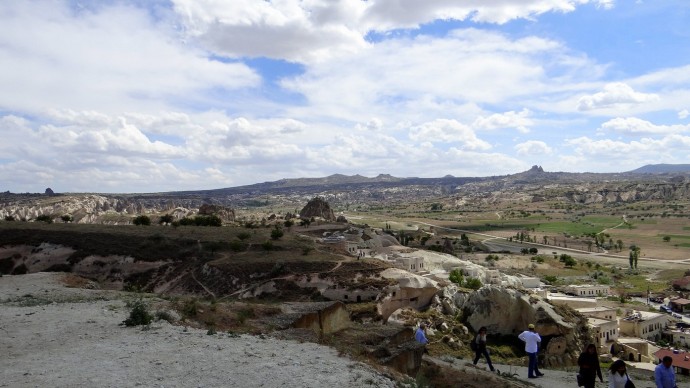
We start down.
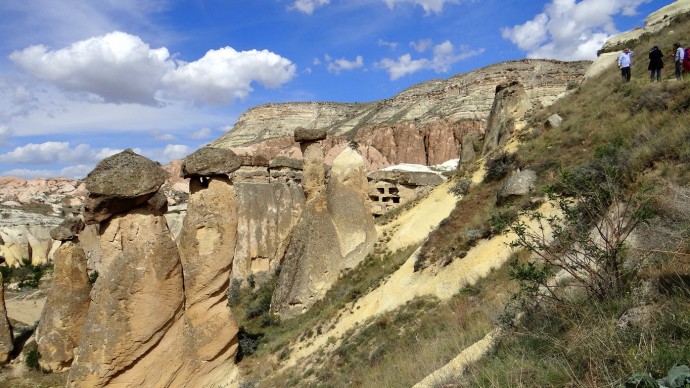
The path is narrow, very steep and slippery with loose rock.
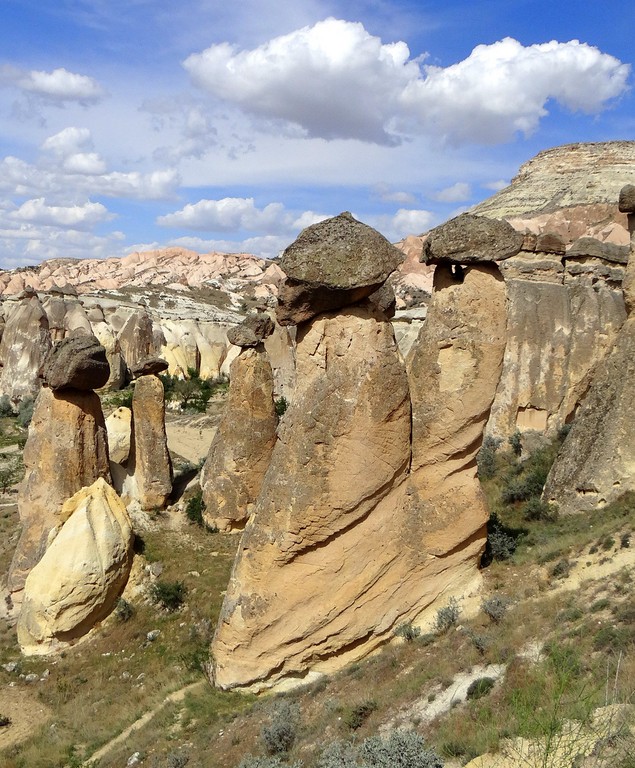
We see tufa formations 250 feet high on the steep hillside.
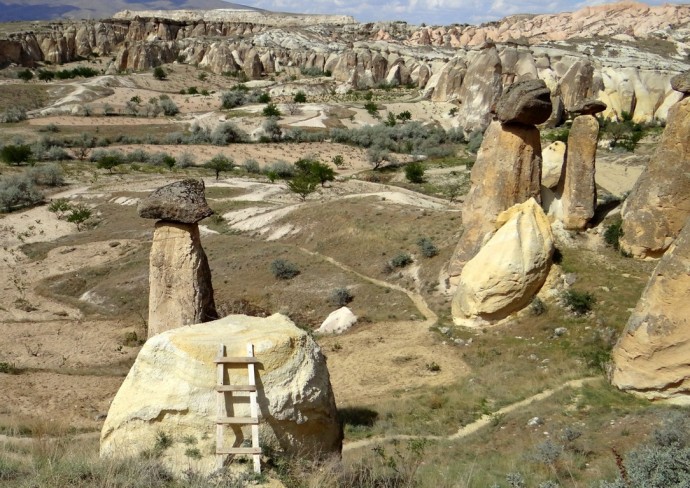
A little ladder beckons Owen, but I make him stay on the path with the rest of us.
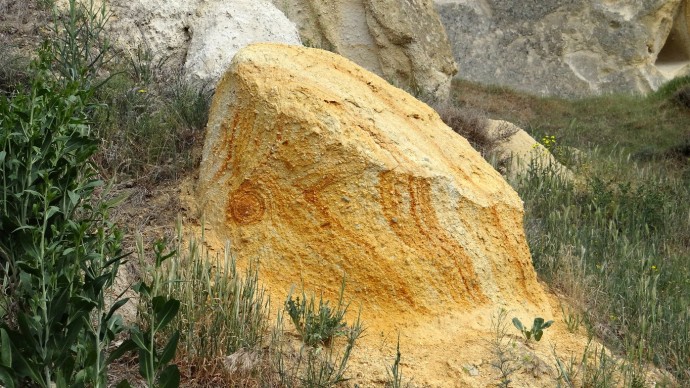
Ancient graffiti.
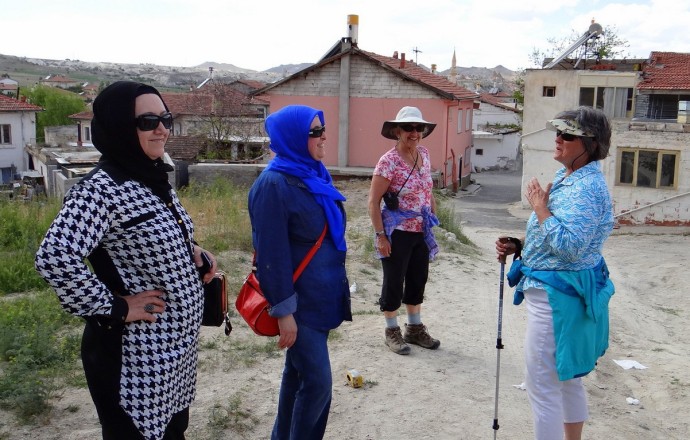
At one point on the path, two Moslem women with inappropriate shoes
are having difficulty and in danger of falling. Our effervescent, ever
helpful, Joyce, offers to help them and they glom onto her so tight,
one on each side, she was unsure if her arm would ever regain feeling.
They smiled and thanked her gratefully at the bottom of the hill for her
help.

We strolled through the town. Everybody wanted an ice cream and we
got it from a magician. He would hand you the cone, and draw it back
quickly and tap the ice cream across your nose or cheek. Then, he’d flip
it and do other maneuvers to keep you laughing before finally
relinquishing your treat. Owen got his ice cream and cone separately. We
paid, and Owen reached in my hand and took two lira back to his tip
jar. It was worth it.
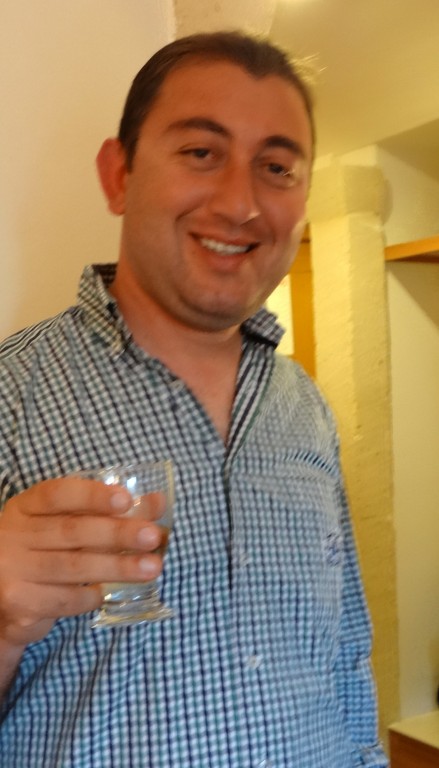
We had a final happy hour with Usla, paid our tips, ate our last dinner in the hotel and headed for bed.
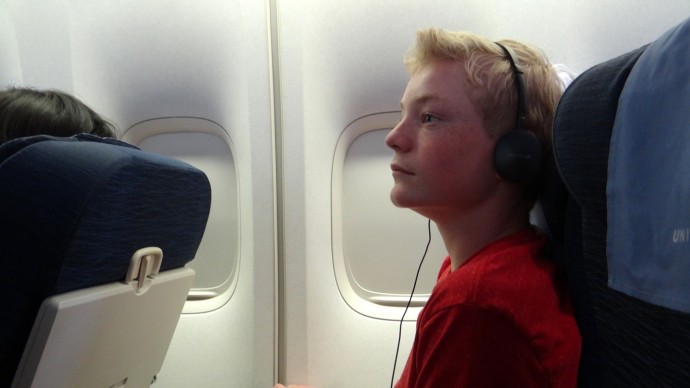
Three flights in the morning, one from Cappadocia to Istanbul,
Istanbul to Frankfurt, Frankfurt to San Francisco, for us. Because of
our snafu on the way out and because I couldn’t get our flight up
on-line at the hotel, I worried we’d have the same problem returning.
Usla stayed with us in the airport until 2:00 p.m. to catch our flight.
He was a great guide who went beyond the call of duty, repeatedly. Very
helpful and patient. We watched movies and Owen got some sleep on the
way home. Turkey is a wonderful country to visit. If you ever get the
chance…go! Better yet, go with OAT.
